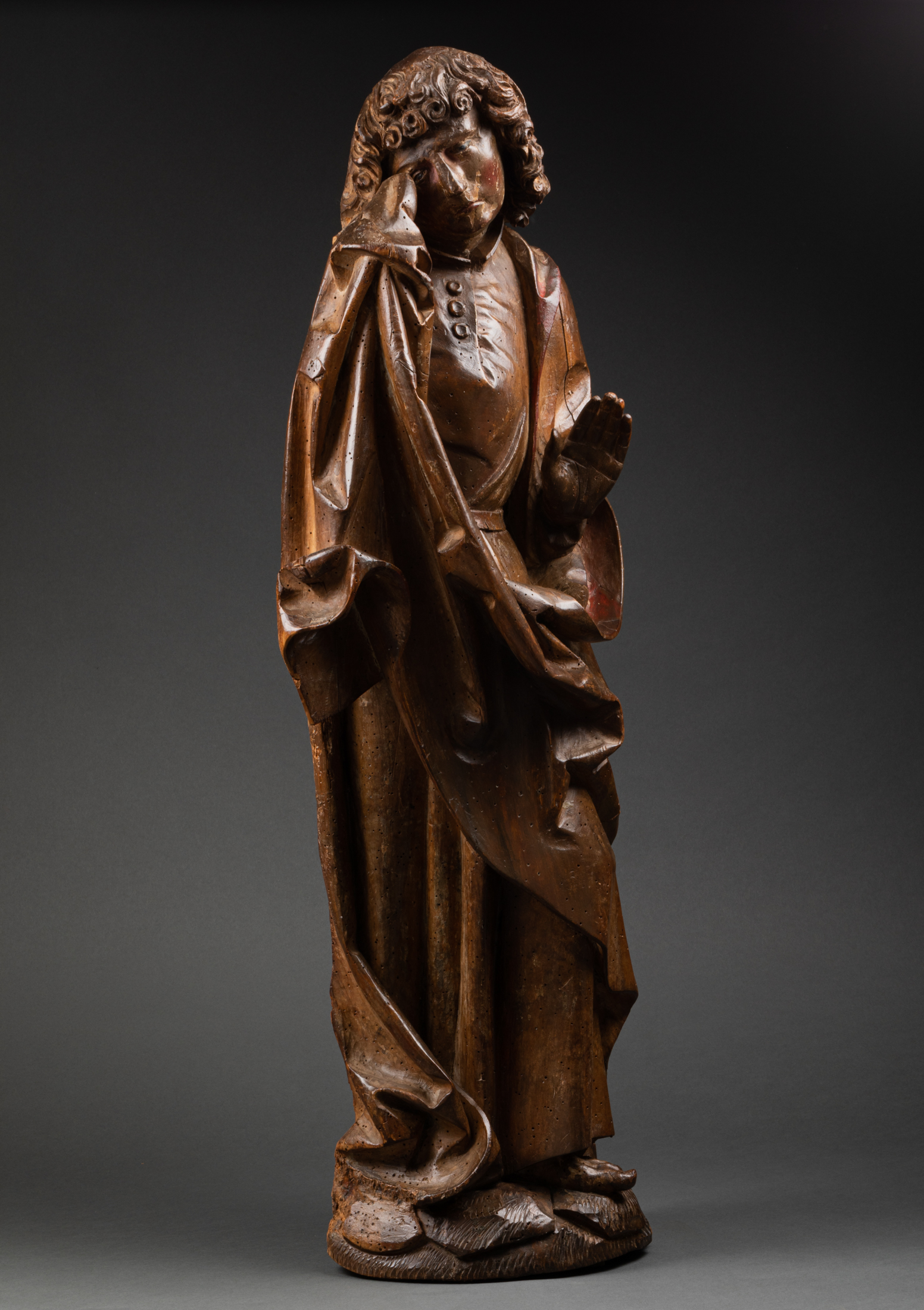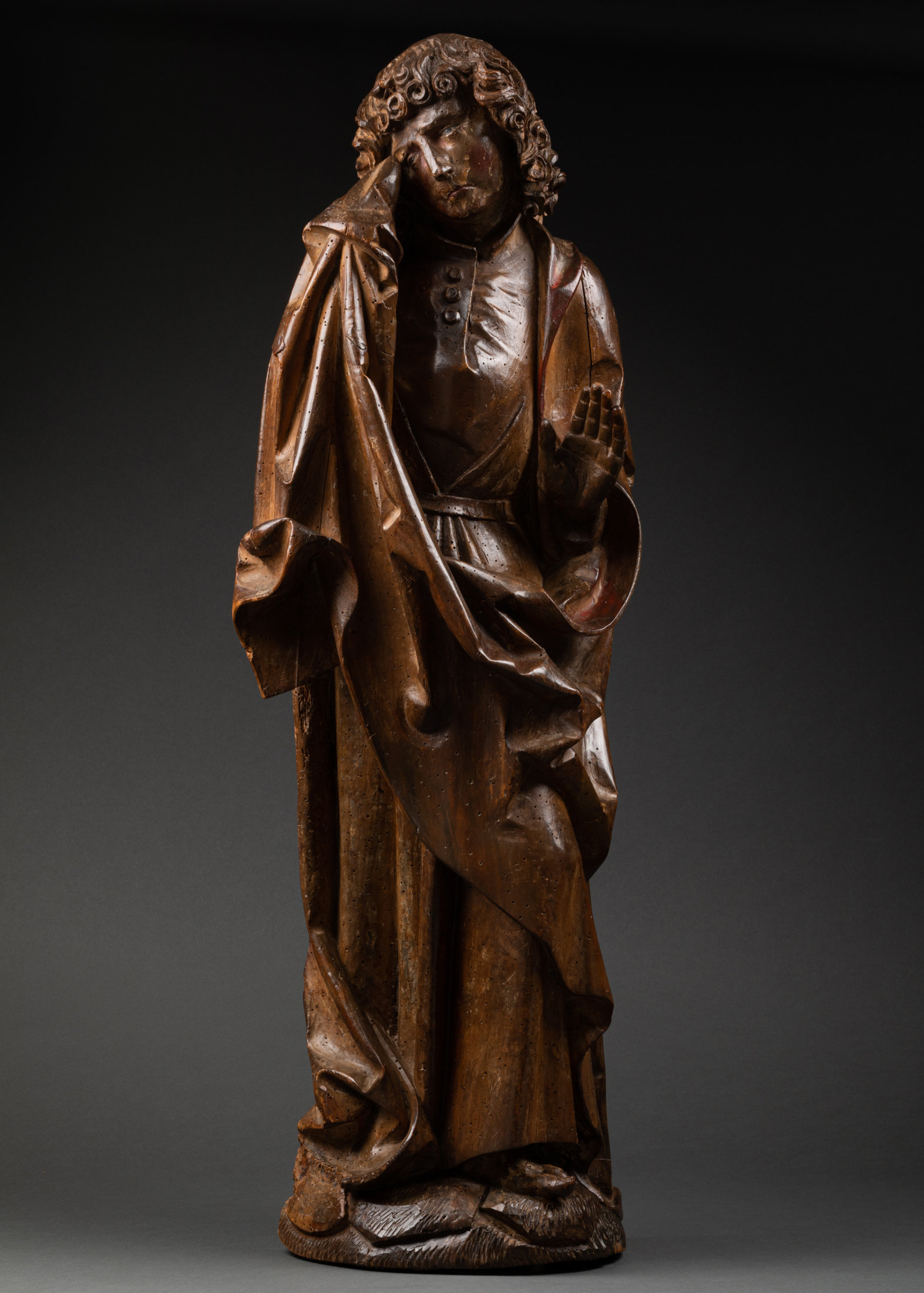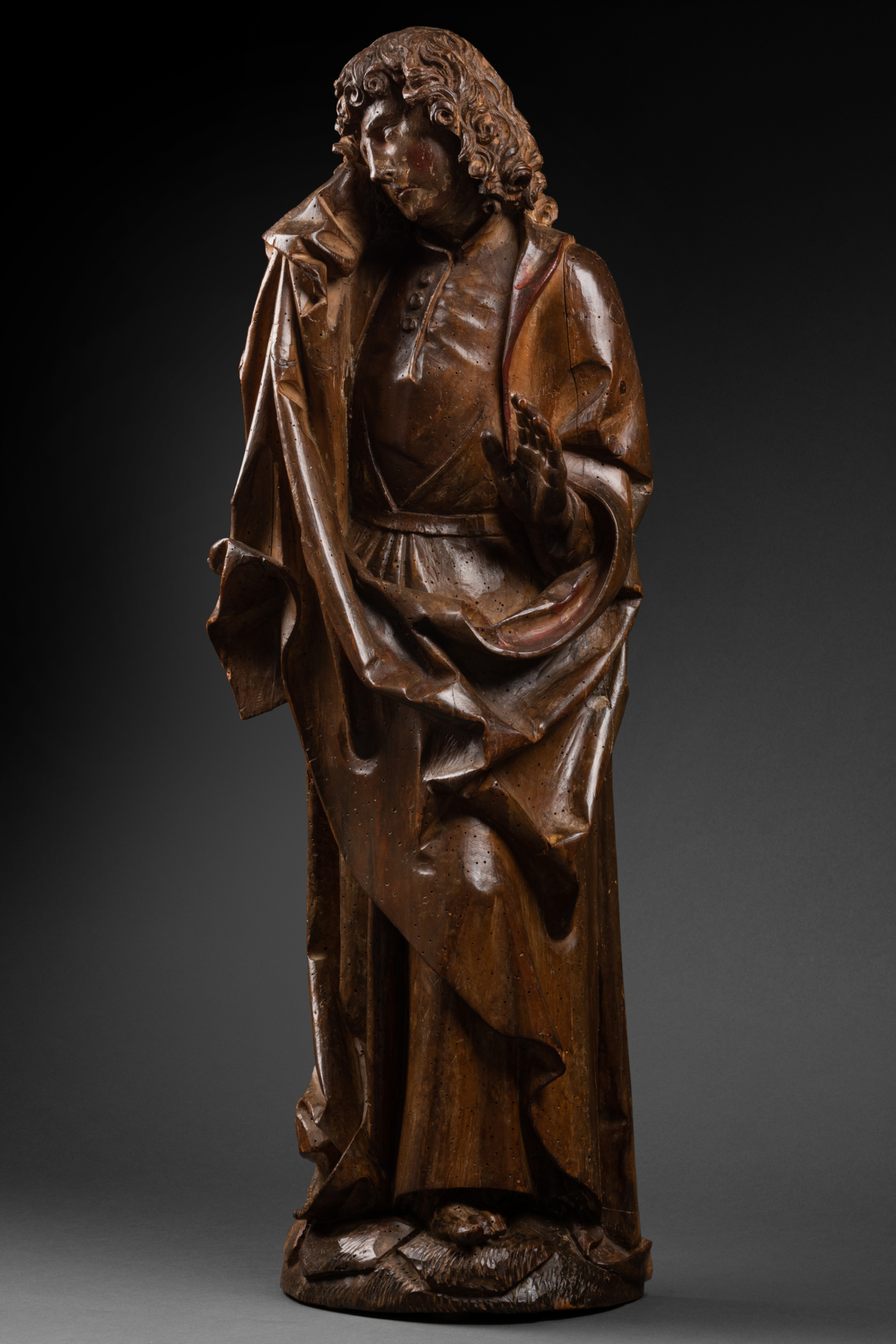Description
Ce superbe Saint Jean en tilleul est caractéristique de la production artistique de la Bavière de la fin du XVe, début XVIe. Il a des yeux en amandes, des petites lèvres pincées, un nez recourbé, des cheveux épais et bouclés. Il porte un habit traditionnel pour les hommes du XVIe siècle, serré à la taille par une ceinture et recouvert d’un large manteau, dont les plis et le drapé offrent à la pièce un réalisme saisissant. Le saint est debout, pieds nus, avec la tête légèrement tournée vers sa droite, il essuie ses larmes avec un bout de son manteau de la main droite et lève sa main gauche en réaction à la scène qu’il observe. En effet, la posture de Saint Jean nous indique qu’il faisait partie d’un ensemble plus large, réalisé pour un retable d’autel : une scène de crucifixion du Christ. Selon la tradition, Jean « le disciple que Jésus aimait » est présent au pied de la croix à la mort du Christ, en compagnie de Marie. Toujours à la gauche du Christ, La Vierge et Jean, sur la droite, pleurent et se lamentent ensemble. L’attitude de notre Saint Jean exprime une vive émotion et une profonde douleur mais dégage également une grande piété.
Cette oeuvre est à rapprocher du travail du sculpteur allemand Daniel Mauch (1477-1540). Artiste attesté à partir de 1508 dans la ville de Ulm (Bade Wurtemberg) où il dirigea un atelier spécialisé dans les retables sculptés en bois, il est connu pour avoir travaillé les dix dernières années de sa vie en région wallonne. Avec la Réforme protestante qui gagne du terrain dans l’Empire Germanique, la demande en images religieuses s’effondre, lui faisant ainsi perdre une partie de sa clientèle. Fidèle à la foi catholique, il quitte avec sa famille la ville de Ulm lorsque celle-ci se déclare protestante. Il s’installe à Liège où il va travailler jusqu’à la fin de sa vie et laisser une empreinte forte sur la scène artistique de la région. Le rapprochement de notre pièce avec cet artiste est renforcé par une autre oeuvre attribuée à Mauch : un Saint Sébastien en bois de tilleul, conservé au Petit Palais, datant des premières décennies du XVIe siècle. Le travail de la chevelure, les plis du vêtement, les pieds nus sur une base d’herbe, et le visage digne mais rempli d’émotions sont des éléments qui confirment notre rapprochement.
La qualité du bois, les traces de polychromie et de dorure ; ajouté à la grande finesse du ciselage de cette sculpture, nous offre une représentation du saint des plus touchante et élégante.
________________________________________
This superb limewood Saint John is typical of Bavarian artistic production in the late 15th and early 16th centuries. He has almond-shaped eyes, small pursed lips, a curved nose and thick, curly hair. He wears a traditional 16th-century male garb, cinched at the waist by a belt and covered by a broad cloak, whose folds and draping give the piece a striking realism. The saint stands barefoot, with his head turned slightly to his right, wiping his tears with a piece of his cloak in his right hand and raising his left hand in reaction to the scene he is observing. Indeed, St. John’s posture indicates that he was part of a larger ensemble, created for an altarpiece: a scene depicting the crucifixion of Christ. According to tradition, John « the disciple whom Jesus loved » is present at the foot of the cross at Christ’s death, in the company of Mary. Still on Christ’s left, the Virgin Mary and John, on the right, weep and lament together. Our Saint John’s attitude expresses deep emotion and sorrow, but also great piety.
This work is closely related to the work of German sculptor Daniel Mauch (1477-1540). Attested from 1508 onwards in Ulm (Baden-Württemberg), where he ran a workshop specializing in wooden altarpieces, he is known to have spent the last ten years of his life working in the Walloon region. With the Protestant Reformation gaining ground in the German Empire, demand for religious images collapsed, causing him to lose some of his clientele. Faithful to the Catholic faith, he and his family left Ulm when it declared itself Protestant. He settled in Liège, where he worked until the end of his life, leaving his mark on the region’s art scene. The connection between our piece and this artist is reinforced by another work attributed to Mauch: a limewood Saint Sebastian, preserved in the Petit Palais, dating from the first decades of the 16th century. The workmanship of the hair, the folds of the garment, the bare feet on a grassy base, and the dignified yet emotional face are all elements that confirm our connection.
The quality of the wood, the traces of polychromy and gilding; added to the great finesse of the carving of this sculpture, offer us a most touching and elegant representation of the saint.




